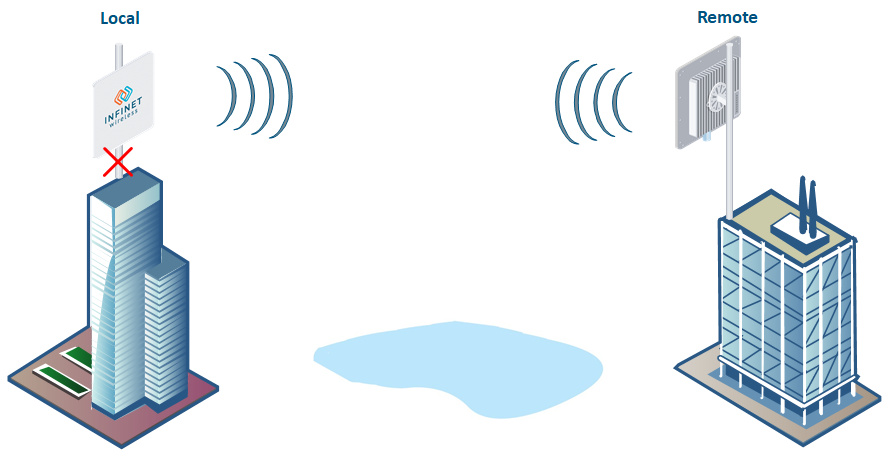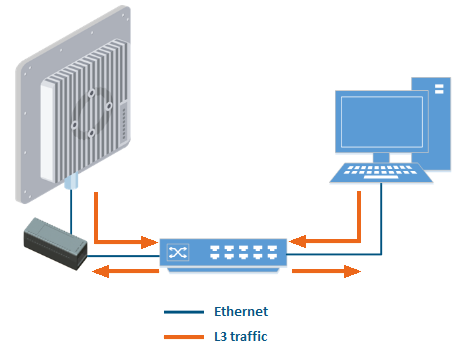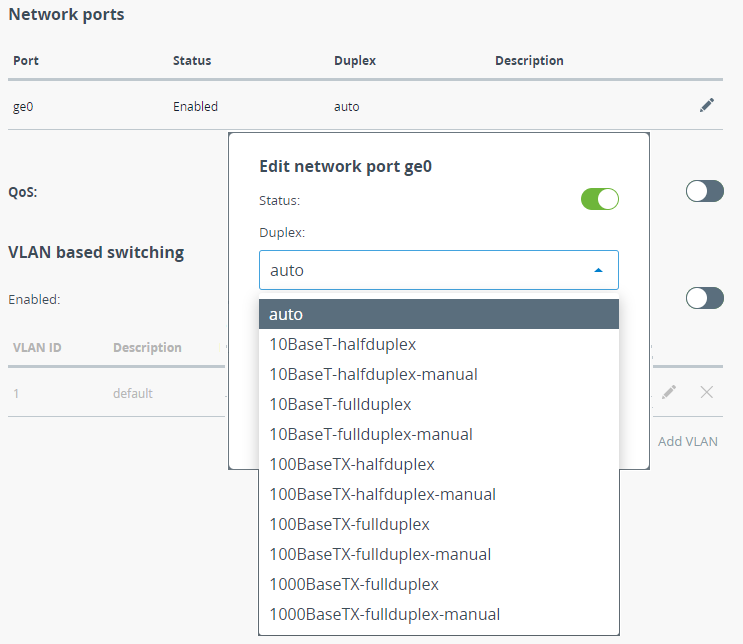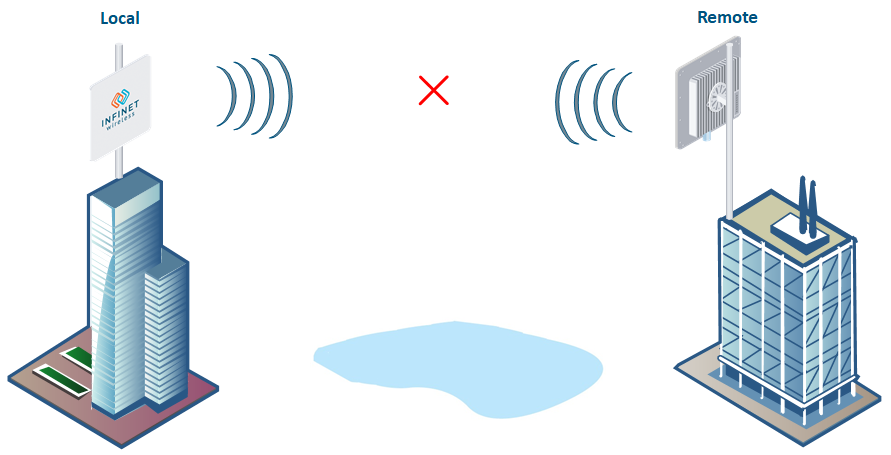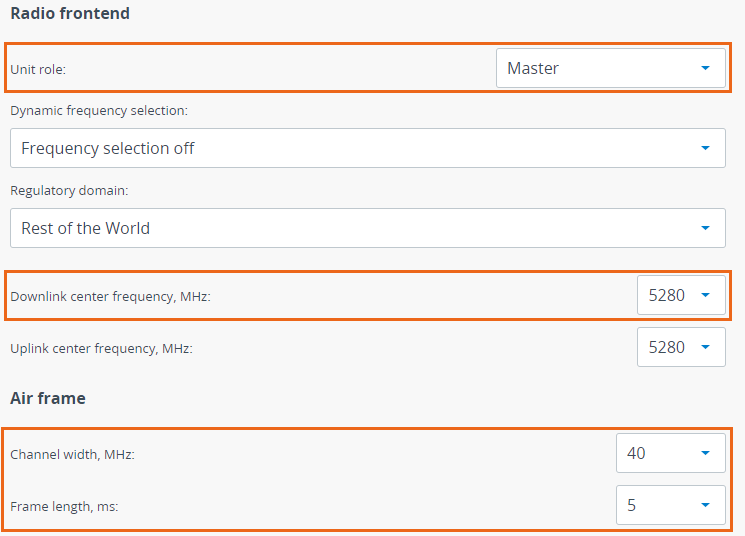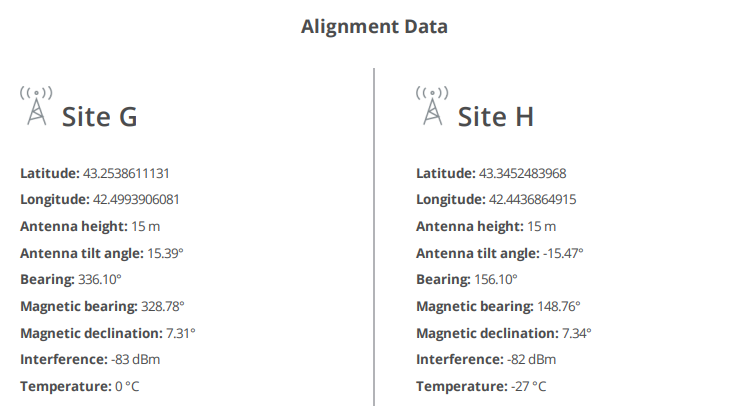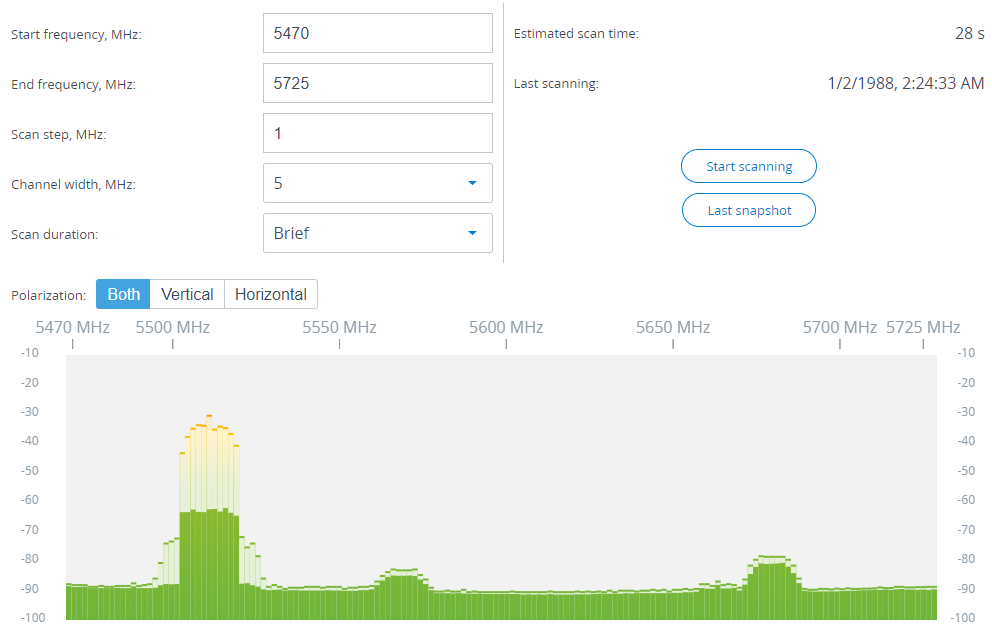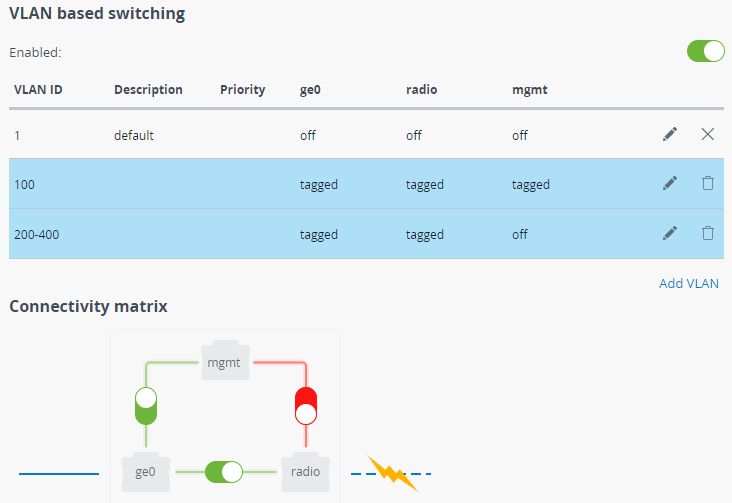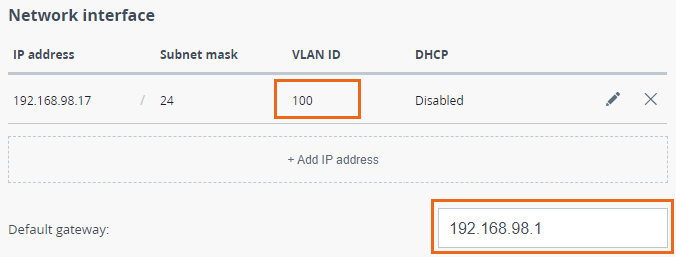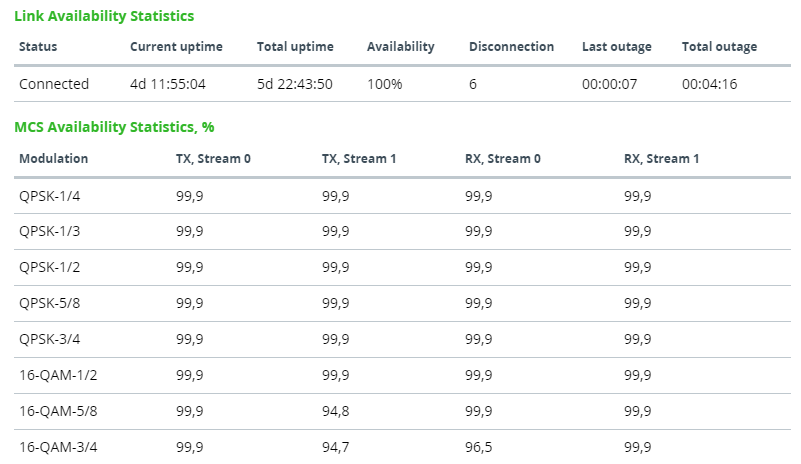...
1.No access to the local unit
...
Checking the network infrastructure
Make sure there is connectivity between the control center and the device installation point. If the access is missing only to the Infinet device, further verification must be performed at the installation site.
LED indication
Check the power supply to the device: a red light of the . The "POWER" indicator shows up has three possible colors:
- Red light - the device is connected to the electricity mains,
...
- Yellow light
...
- - a wired connection with a speed of 10/100 Mbps
...
- Green light - a wired connection
...
- with a speed of 1000 Mbps
...
- .
Other indicators are used to perform coarse antenna alignment. The more indicators are on, the better wireless connection is established. The blinking indicator means an intermediate state.
If there is no power, it is necessary to check the power supply, connectors, the Ethernet cables integrity.
...
| Gliffy Diagram | |||||
|---|---|---|---|---|---|
|
...
|
Access to the unit recovery
If the power indicator is on and there is connection via the Ethernet interface, connect to the device directly as it is shown in the scheme below. Make sure that the IP address of the PC is in the same subnet as the IP address of the device. You can restore the IP address and reset the device to the factory settings using the ERConsole utility.
...
Before starting the access restoring procedure, it is recommended to install the following software:
- ERConsole: ftphttps://ftp.infinet.ru/pub/Utils/EmergenceRepairConsole/ERConsole.zip.
- Java Runtime Environment: http://www.java.com/en/download/.
...
Use a simple unmanaged switch as intermediary device between your PC and the Infinet unit. It is essential to reboot the InfiNet unit each time in order to activate the Emergency Repair Protocol on the unit, therefore the switch would prevent your PC Ethernet interface from flapping up and down. Using Cisco Catalyst switches for unit recovery is not recommended due to a known issue port mode negotiation delay.
IP address should be configured on the PC for the ERConsole utility work.
| Note | ||
|---|---|---|
| ||
ERConsole and Infinet Wireless units exchange information only during the bootup process, therefore each time you need to read the units IP-address, to add a new IP-address or to restore to the default configuration, the Infinet Wireless unit should be rebooted. |
...
- Get the factory password by sending a request to the your distributor or to the Infinet technical support service if the device was purchased directly. In the request, specify the serial number and the "Sequence" parameter value (if the value is not zero).
- Obtain the IP-address of the unit using the ERConsole as described in the section above.
- Click on the «+» button in the ERConsole application and a new window will appear.
- Select “Reset configuration” option and enter the Factory Password obtained at the previous step in the "Factory password" field, then click «OK». The password must be entered the same format as it has been got it from the distributor or IW support (with the gaps)..
- Turn off and on the device and then wait for about 30 seconds until the "Complete" sign will uppear.
- The unit will start in special emergency mode with the IP-address 10.10.10.1 and mask 255.255.255.0.
- Login to the unit and use "Restore Factory Settings" button on the "Maintenance" page to switch off emergency mode.
- Set new login and password, then save the configuration and restart the unit.
Checking the
...
wired interface state
If you were able to access the device by connecting directly, try to determine the possible reason for the unavailability through the network. Pay attention to the wired interface statistics.
...
In the "Wired interface" section, you can monitor the Ethernet wired interface status and its traffic load for reception and transmission. The wired interface statistics is on the right side and can be reset by clicking the "Clear counters" button. Pay attention to the FCS errors number which indicate a violation of data integrity during transmission over the wired segment. Also, the problem can be caused by a queue (port) overflow or inappropriate frame size (runt and oversize).
...
Pay attention to the duplex mode on the network devices connected to the wireless bridge. The duplex mode can be changed in the "Switch" - "Network Ports" section. We recommend setting the autonegotiation mode provided by the Ethernet standard. The problem can occur while connecting two devices with different duplex settings. For example, if one device has the autonegotiation mode, and the other - fixed full duplex mode.
...
2. Wireless Wireless link is not established
...
...
Pre-configuration in the lab
Before installing the devices on site, we recommend to configure the basic parameters in the lab and to make sure that the link is establishing. Step-by-step instructions for a wireless link configuration are given in the Link Pre-configuration in the lab article.
...
- Channel Width.
- Frequency.
- Frame length.
- Access key.
...
Checking the firmware version
In the "Maintenance" section, make sure that the same firmware version is installed on both devices. The latest software versions can be downloaded from the official Infinet FTP server.
...
Checking the installation requirements
Check if the suspension height, azimuth and elevation of the antenna match with the values obtained from InfiPLANNER. Make sure that the obstacles on the path profile are not higher than those specified during the planning phase.
...
Interference detection
Using the built-in Spectrum Analyzer tool, scan the air on both sides of the link to make sure there is no interference that could corrupt the signal on the device's operating frequency and on the adjacent frequencies. To get accurate information about the frequency, hover the mouse cursor over it. The pop-up window below provides information about frequency, maximum signal level, average signal level. The indicators show the signal level in dBm. For operation at the highest modulations, the RSSI parameter value should be in the range of -60 ...- 40 dBm. To get the spectrum scanning results on the remote device, use the "Last snapshot" button.
...
3. The The wireless link is established, but there is no access to the remote device
...
In the "Switch" section of the web interface, make sure the VLAN-based switching settings are configured in accordance with the network architecture. Make sure the connectivity between the "ge0" and "radio" interfaces is enabled.
...
Checking the switch settings on the remote device
...
In the "Network" section, make sure the correct VLAN ID is assigned to the management IP address and the default gateway is configured in accordance with network architecture..
...
4. The wireless link throughput is lower than expected
...
Perform an antenna alignment using the built-in utility, especially in case the RSSI and EVM values are low.
...
Availability statistics
To analyze the wireless link availability time, proceed to the corresponding statistics in the "Dashboard" - "Availability statistics" of web interface. The opened window displays the link operation statistics for each modulation.
...
5. Common errors in configuration
...
Enable the automatic transmit power control (ATPC) in order to increase the operational life of the devices. Set the "Target RSSI" parameter to values from -40 to -60 dBm.
...
Frame length
Make sure the selected frame size ensures the best performance for your wireless system. A short frame will transmit less payload than a long one, however it ensures a smaller delay.
